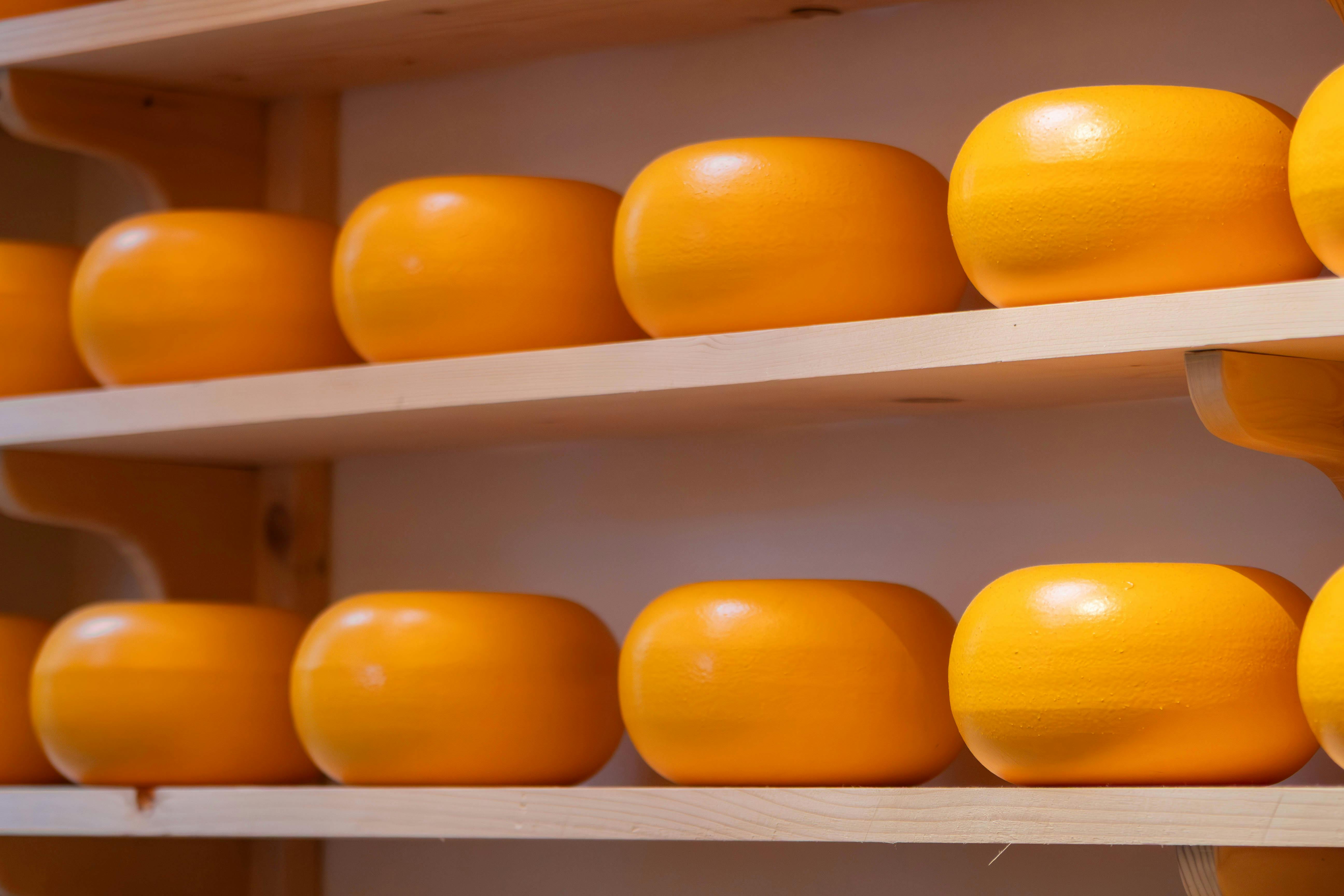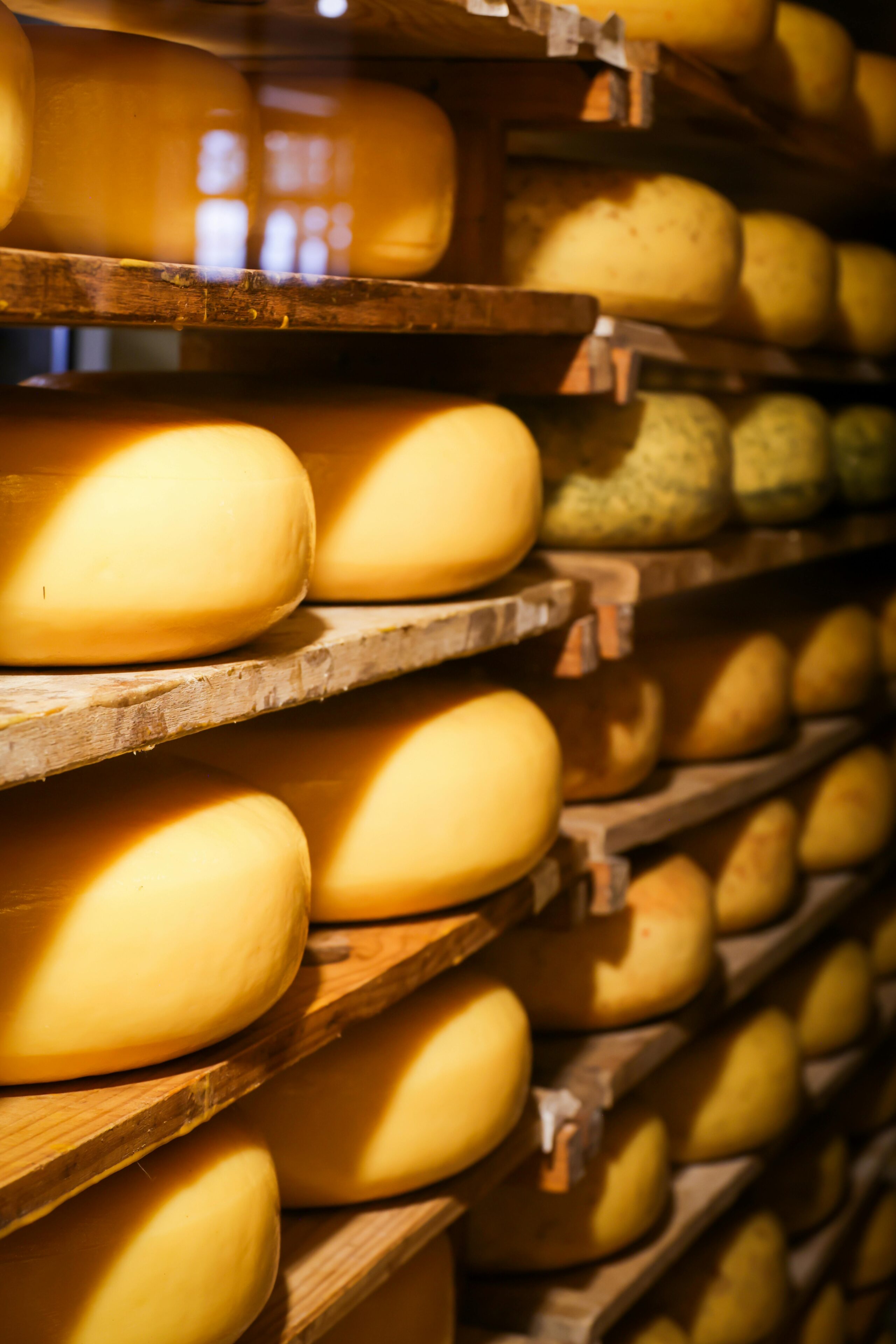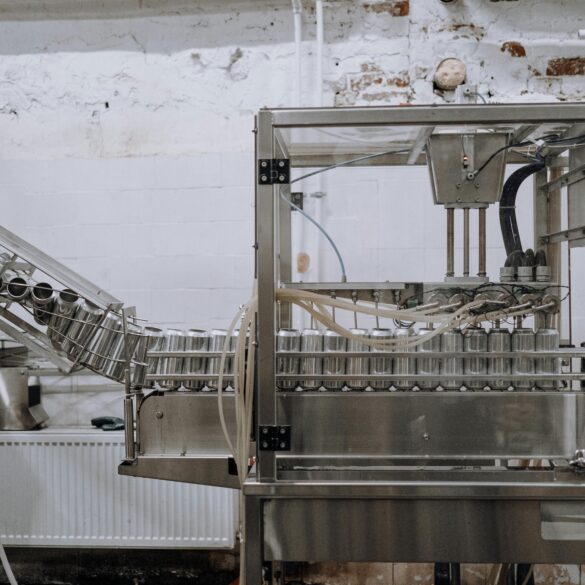Dutch Cheese Aging: Expert Insider Tips for Gourmet Results at Home
Let’s set the scene. Picture a wooden shelf lined with golden, fragrant cheese wheels—each one shaped not just by centuries of tradition, but by the careful observation and downright obsession with detail that Dutch cheesemakers are famous for. Now, imagine you could capture even a slice of that magic—not in a commercial dairy, but in your own kitchen or basement. I used to think this was just a pastoral fantasy for TV chefs and food tourists. Actually, that’s a miscalculation; what I’ve found, after years of experimenting and—frankly—ruining more cheese than I care to admit, is that home cheese aging truly is achievable, even for non-professionals, if you approach the process with a blend of Dutch precision, creativity, and absolutely inevitable mistakes. In this guide, I’ll draw on what I’ve learned from Dutch insiders who generously shared their trade secrets over mugs of coffee and the occasional (dangerously strong) jenever, as well as plenty of hands-on, hard-won home aging experience, to lay out a process—and a mindset—that gives real, gourmet results.
Why Age Cheese? Dutch Tradition Meets Home Innovation
Why do we age cheese at all? There are simpler ways to get a dairy fix. But aging—called rijping in Dutch—is where humble curds are transformed into something greater, developing deep, layered flavors and a texture that evolves from creamy to crystalline. What really strikes me is how this slow process of transformation lies at the heart of Dutch food tradition; it’s not just about flavor, but about patience, observation, and controlled risk-taking. The Netherlands is famous for cheeses like Gouda, Edam, and Leyden, each with its own aging rituals. In towns like Alkmaar or Woerden, cheese aging is practically a religion; locals will debate, in excruciating detail, the merits of a wheel matured for 6, 12, or 24 months. I used to think this was mostly old-world pageantry. Honestly, it’s practical genius—precise, repeatable methods honed over centuries, yet still open to innovation.
My first attempt at home cheese aging—a mishandled “Gouda” that ended up more like cheese soup—taught me right away: tradition sets the framework, but attentive tinkering, environmental adjustment, and troubleshooting are what actually move the needle toward gourmet results. So, why age cheese? For the joy of watching (and tasting) transformation. For the chance to say you created something truly, deeply Dutch—even if you’re in Milwaukee or Melbourne.
Insider Essentials: What Makes Dutch Cheese Unique?
If you’ve never visited a Dutch kaasmarkt (cheese market), let me paint a picture: the air is thick with the tang of ripening cheese, and you’ll spot artisans swirling each wheel, tapping, sniffing, sometimes giving it a polite squeeze—real cheese aging is practically a sensory sport. Every Dutch cheese has distinct markers developed through aging:
- Gouda: Starts mild and creamy, evolves into bold, caramelized, crystalline slabs after 12+ months.
- Edam: Characterized by its spherical shape, subtly sweet aroma, and a progression from rubbery/youthful to firm and nutty.
- Leyden: Notable for its cumin or caraway seeds and semi-firm bite, becoming spicier and more complex as it ages.
I still remember a conversation with Paul, an Utrecht cheesemonger for over 30 years, who whispered, “Cheese tells you when it’s ready. You just need to listen.” The real insider’s trick? Environmental mastery—temperature, humidity, air flow, and simple patience. The great news: you can often replicate these conditions at home, even improvised, if you know what levers to pull. Just don’t expect your first effort to win an international medal. Dutch masters will tell you that perfection is always just out of reach—and that’s where the fun (and the gourmet magic) lives.
Top Home Aging Challenges No One Tells You About
Before you even slice your first curd, let’s just get honest about the obstacles you’ll face. If you’re expecting “set-it-and-forget-it,” you’re in for a (sometimes pungent) surprise. Here’s what Dutch pros—plus us mere mortals who’ve tried aging at home—know you need to prepare for:
- Mold Management: Mold will appear—it’s both a friend and foe. Knowing which blooms are “friendly” (those blue/green surface colonies) and which signal spoilage is a huge learning curve.
- Humidity Hassles: Too dry? Crack city. Too humid? Hello, cheese sludge or unwanted bacteria.
- Temperature Fluctuations: Even minor shifts (say, someone opens the garage daily) can derail aging timelines. Precision matters, but so does flexibility—a lesson I learned when my so-called “cheese cave” doubled as the cat’s favorite spot.
- Patience (or the Lack Thereof): Most cheese needs weeks—or better, months—to develop true character. And the hardest part is waiting it out and resisting the urge to taste too early (spoiler: early samples tend to disappoint!)
Visión clave:
If you tackle these challenges expecting setbacks as part of the journey—rather than as failure—you’ll learn faster and get tastier results. Every Dutch cheesemaker has their own horror story about the “one that went wrong,” usually followed by an eye twinkle and a list of fixes that made the next wheel legendary.
Expert Strategies: Step-By-Step Dutch Cheese Aging
This is where we get technical—and practical. Having spoken with Dutch insiders, including a tour of the Beemster maturation cellars, let me break down their approach into clear, honest steps (and clarify a few myths I wish I’d understood earlier):
- Choose Your Cheese Wisely: Start with a young, pressed Dutch cheese (a basic Gouda or Edam-style is best). Don’t try to age Brie or blue cheese with these exact techniques—it’s a whole different ballgame.
- Create Consistent Conditions: Aim for 10-15°C (50-59°F) and 80-85% humidity. I’m partial to a converted mini-fridge with digital controls; others use wine fridges or, in the Dutch lowlands, a cool cellar (which has precisely the “damp stone” aroma you’d imagine).
- Turn Regularly: Dutch experts flip wheels weekly; this distributes moisture and prevents lopsided aging—crucial for even rind development. Forgetting for just a week can create “cheese knees” (real term!).
- Wax or Not? Traditional Gouda often gets a paraffin wax coat to lock in moisture and banish excess mold, but purists or advanced home agers may prefer natural rinds for more complex microbial action. Both work—just know your risk tolerance and desired flavor outcome.
- Troubleshoot Actively: Don’t fret over minor surface mold—simply wipe clean with a salt-water-soaked cloth. Deep cracks or rancid smells? Pitch it and start again. Every pro has lost wheels—remind yourself you’re in excellent company.
Beginner-to-Pro Progression:
Your first success (even a passable, slightly under-aged Gouda) is a win—absolutely celebrate it. Gradually tweak humidity, aging time, and rind management, and keep a notebook. That’s where the leap from “replicator” to “artisan” happens.
| Aging Element | Optimal Range | Consejo de experto | Warning Sign |
|---|---|---|---|
| Temperatura | 10-15°C (50-59°F) | Slight variations add complexity | Sharp, ammonia aroma = too warm |
| Humidity | 80-85% | Use a simple digital hygrometer | Cracks/dry rind = too low; slimy = too high |
| Turning | Semanalmente | Pair it with a calendar reminder | Uneven texture, “knees” on one side |
Advanced Tips: Flavor Tinkering, Texture Mastery
Admittedly, “mastery” is a slippery word when it comes to cheese. But here’s where Dutch experts consistently outshine: the fearless, nerdy pursuit of deeper flavor and unique textures. What if you want to push your results toward world-class?
- Flavor Additions: Classic Dutch cheeses sometimes include cumin, cloves, or even fenugreek seeds (try it in a small wheel!). Add at the curd stage, not while aging, to avoid bitter off-notes.
- Surface Washes: Experiment with regular brine rubs, light vinegar, or even beer (yes, seriously—try a Dutch dubbel!) for a deeper, nuanced rind and complex flavor development.
- Patience as an Ingredient: Allow young cheeses to mature beyond the “recommended” timeline—let flavor crystals and even slight caramelization develop. I used to cut wheels at three months and wonder what the fuss was about; Dutch mentors finally convinced me to wait a full 12 months, and the difference was staggering. Nutty, sharp, faintly sweet—a game changer.

Dutch Cheesemaker Tales: Lessons & Mistakes
It’s tempting (especially online) to only talk about successes. But real growth always comes from mistakes—ask any Dutch affineur and the stories start flowing faster than the cheese. During an apprenticeship stint in Friesland, I watched a master quietly pitch three wheels in one week. “Too chalky, too bitter, too soft,” she said, grinning; every failure, she explained, was a future flavor insight. Here’s my own hard-learned catalog of “what went wrong,” and what it actually taught me:
- Cave Not Cool Enough: During a summer heatwave, my “cheese cave” crept above 18°C and turned perfectly promising Edam into rubbery disappointment. Solution? Invest early in cooling tech, even if it’s makeshift.
- Wax Drama: Going too thick with wax can trap moisture, creating pockets where wild bacteria thrive.
- Mold Misjudgment: I panicked over a blue-gray patch, wiped too aggressively, and stripped the protective rind. The next week? A cheese that smelled like gym socks. Now, I assess mold type and location before acting.
Llevar:
If your first aged cheese is “edible but uninspiring,” you’re on exactly the right track—the leap to gourmet comes from systematic, relentless troubleshooting. Keep a batch log: Date, temp/humidity targets, flavor/texture notes, and especially what didn’t work. Over time, the patterns become invaluable, and yes—frustration fades with every improved wheel.
Essential Tools & Resources
Full confession: you do not need to drop hundreds on fancy gear. But a few specific items make the process radically more reliable (and, let’s be honest, way less anxiety-inducing for first-timers). Here’s my “absolute essentials”—as tested by Dutch mentors and personal trial-and-error:
- Thermometer + Hygrometer: Accuracy is everything. Digital is best, with data logging a real plus.
- Cheese Mat or Bamboo Rack: Allows air flow under the wheel; inhale, you’ll appreciate the difference.
- Small-Scale “Cheese Cave”: Mini fridge with separate humidity control, wine fridge, or even a cool attic—preferably away from pets and other strong-smelling foods. Improvise!
- Peeled Wax or Food-Grade Coatings: Decide early whether you’re waxing or going natural rind. Each approach needs a slightly different level of vigilance and cleaning; more on that in common troubleshooting references3.
- Cheese Journal: Forget fancy apps—just a notebook or spreadsheet lets you track success patterns and “do not repeat” moments.
| Recurso | Descripción | Dutch Insider Wisdom |
|---|---|---|
| Digital Hygrometer | Measures precise humidity and temperature; often less than €15. | Place at “cheese level,” not top shelf, for accuracy. |
| Wax (food grade) | Stops unwanted mold/evaporation—colors indicate aging time. | Thin, even coats best; avoid over-layering. |
| Brush/cloth for brine washes | Used to wipe mold/clean rinds during aging. | Keep a dedicated cloth; don’t cross-contaminate with kitchen. |
| Cheese Journal | Tracks batch variables and observations. | Every pro keeps one—yours will save you years of trial. |
Country Fact: The Netherlands—Cheese Capital of the World?
Conclusion & Getting Started: Your Gourmet Journey Begins
If you’re intimidated, you’re normal! I was, and every Dutch mentor admits to mistakes well into their professional lives. The key takeaway? The leap from “cheese aging curious” to “gourmet results at home” isn’t about buying more equipment or nailing everything on Day 1—it’s about dedication to observation, note-taking, and small, constant adjustments. Honestly, when you hit that first wheel that tastes like a memory of the Netherlands—nutty, sharp, a little sweet with that perfect crystalline crunch—you’ll understand why so many make this journey year after year.
¿Listo para empezar?
This week, choose a young wheel of Gouda, set up a makeshift “cheese cave,” and commit to tracking your parameters. Join a cheese forum, share your wins and failures, and refine your process—one batch, one lesson at a time. Every Dutch expert started right where you are: curious, a little clueless, and deeply persistent.
Step Back & Reflect
What really matters here? Persistence beats perfection, always. The Dutch remind us—a wheel lost is a lesson gained, and even imperfect attempts build real skill. Document every attempt, review your progress every season, and don’t hide your failures; share them! That’s the Dutch way—openly, sometimes with a laugh, but always with an eye toward what’s next.
Referencias
Works Cited & Additional Resources



